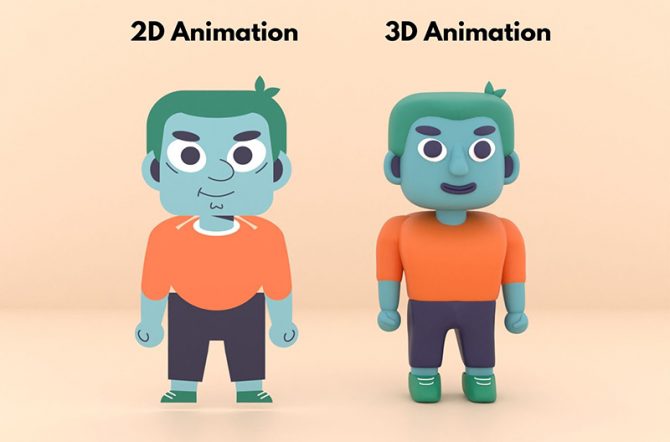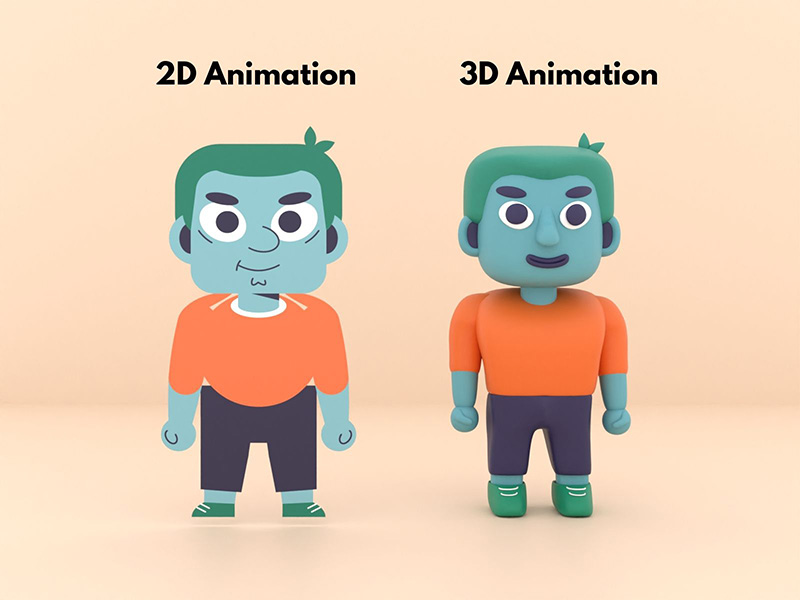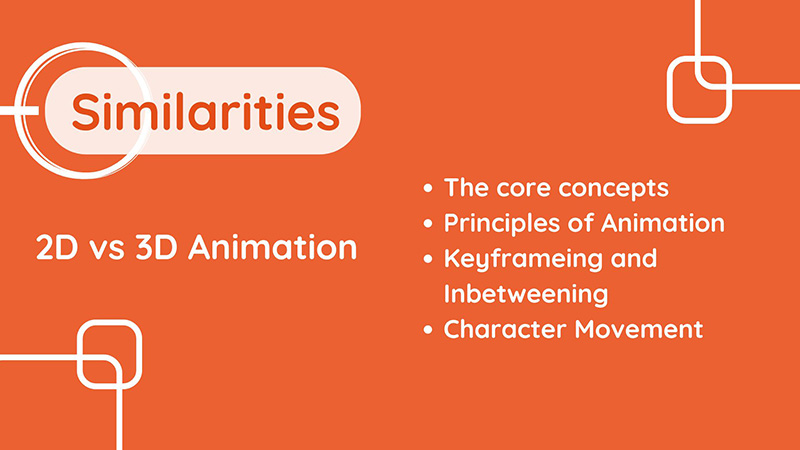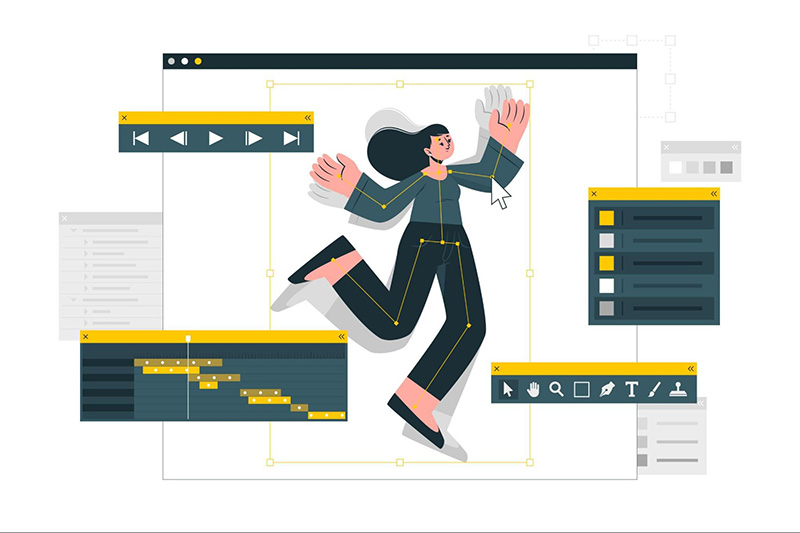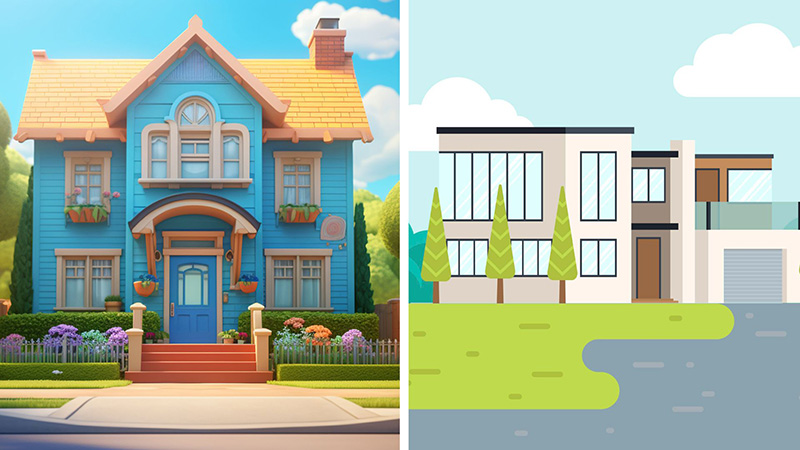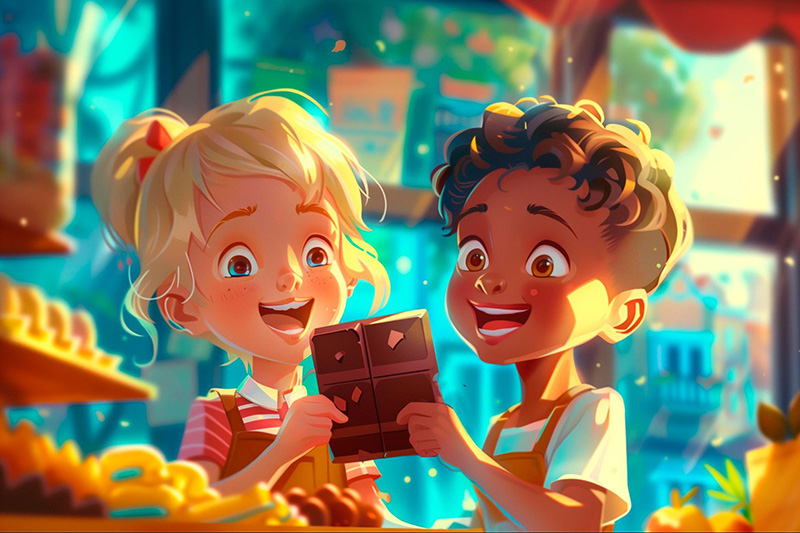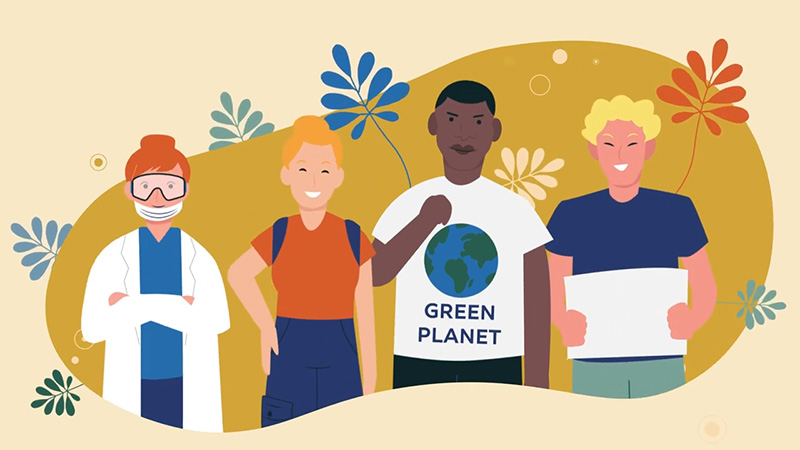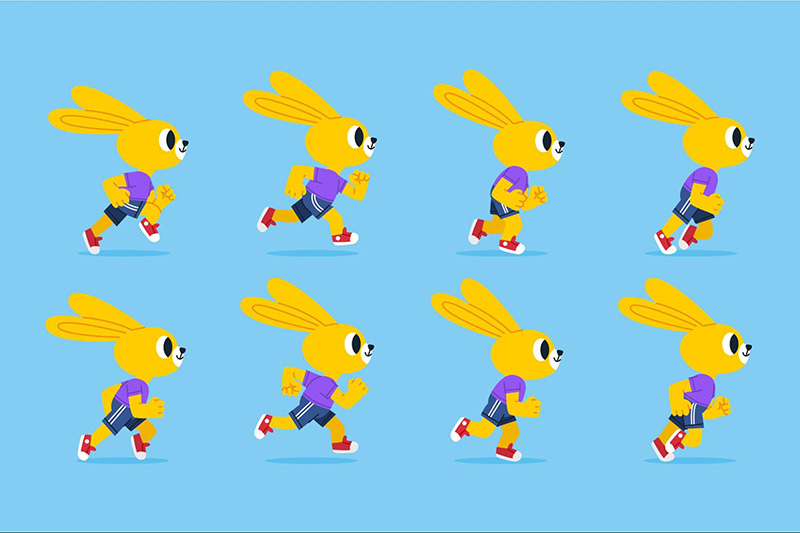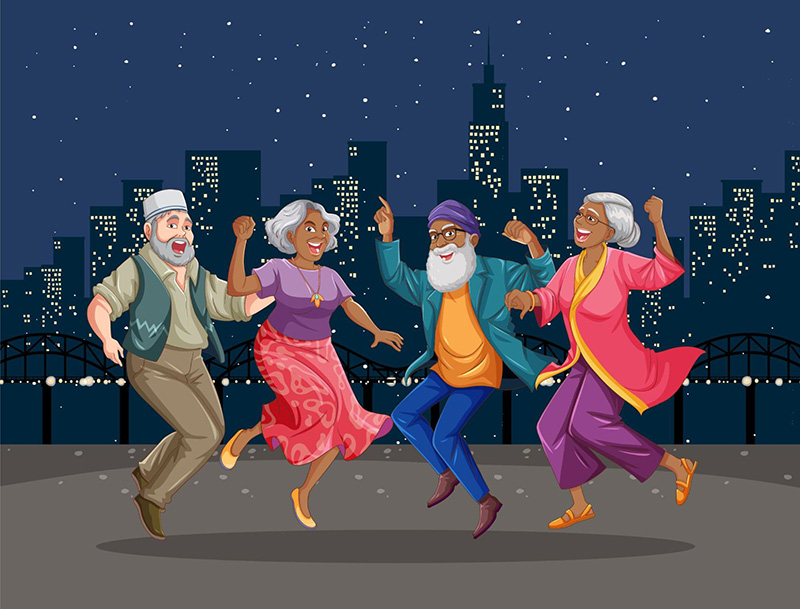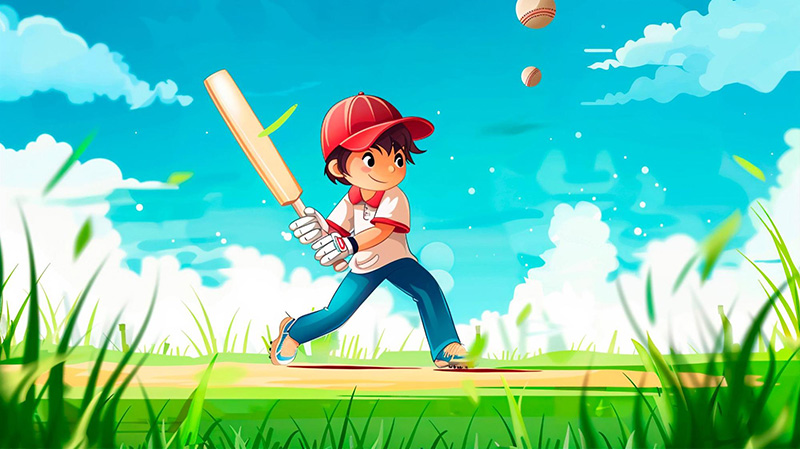Many of us fondly remember the days spent watching classics like Tom and Jerry, where 2D animations brought joy. One century later, the 2D vs 3D animation debate emerged as the advent of 3D animation revolutionized the industry with films like Toy Story and Frozen. In this article, we’ll take a closer look at these 2 types of animation, exploring 4 similarities and 10 differences between 2D and 3D animation.
Understanding 2D Animation
Definition
2D animation involves creating movement in a two-dimensional space. This traditional form of animation relies on drawing sequences of images that display motion when played in rapid succession.
A classic example of 2D animation is Walt Disney’s Snow White and the Seven Dwarfs. Released in 1937, it was the first full-length animated feature film.
Types of 2D Animation
| 2D Animation Type | Description |
| Traditional animation (Hand-drawn animation) | Involves drawing each frame by hand. |
| Digital 2D animation | Utilizes software to create animations, often mimicking the hand-drawn look. |
| Vector-based animation | Uses vector graphics to create cleaner and scalable images. It’s commonly used in flash animations and for web content. |
| Cutout animation | Involves creating characters and scenes out of paper or digital cutouts, then moving these pieces frame by frame. |
| Motion graphics | Focuses on graphic design elements and text, often used in advertisements, title sequences, and explainer videos. |
2D Animation: Pros and Cons
| Pros | Cons |
| • Simplicity and charm: Has a timeless appeal and can be more expressive with simpler designs. • Cost-effective: Generally cheaper to produce compared to 3D animation. • Less production time: Creating 2D animations is quicker now thanks to modern digital tools. • Artistic Freedom: Allows for a wide range of artistic styles and expressions. • Effective for storytelling: Ideal for conveying stories with strong narrative elements. | • Limited depth and realism: Lacks the depth and realism that 3D animation can provide. • Less flexibility: Changes and corrections can be more cumbersome to implement. • Static backgrounds: 2D animation often features less dynamic and more static backgrounds compared to 3D environments. • Limited camera angles and movements: Less flexibility in creating complex camera movements and angles. |
Understanding 3D Animation
Definition
3D animation involves creating moving images in a three-dimensional digital environment, allowing for realistic depth, shading, and perspective. Unlike traditional 2D animation, 3D animation requires specialized software to create 3D models of objects and characters. After that, these models are rigged, animated, and rendered.
Types of 3D Animation
| 3D Animation Type | Description |
| Digital 3D animation | This is the most common form of 3D animation where objects and characters are created digitally using software like Blender, Maya, or 3ds Max. |
| Interactive 3D | This type of animation allows users to interact with the 3D environment in real-time. It’s often used in video games, simulations, and virtual tours. |
| Virtual reality (VR) 3D | VR 3D animation involves creating immersive environments and experiences that users can interact with using VR headsets. It’s commonly used in gaming, training simulations, and virtual tours. |
| Cel shading | Cel shading is a rendering technique used to give 3D objects a cartoon-like appearance with flat colors and bold outlines, resembling traditional 2D animation. |
| Motion capture (MoCap) | Motion capture involves recording the movements of actors or objects and translating them into digital animations. It’s commonly used in film, video games, and biomechanical research. |
| Motion graphics | Motion graphics involve animating text, graphics, and other visual elements to create dynamic and engaging compositions. It’s often used in title sequences, advertising, and explainer videos. |
3D Animation: Pros and Cons
| Pros | Cons |
| • Realism: 3D animation can create highly realistic visuals, allowing for immersive experiences. • Interactivity: It enables interactive experiences, such as in video games and virtual reality applications. • Versatility: 3D animation can be used in various industries, including entertainment, advertising, education, and scientific visualization. • Reusing models: Once created, 3D assets can be reused and repurposed across different projects. | • Complexity: Creating 3D animations can be complex and time-consuming, requiring specialized skills and software. • Cost: Producing high-quality 3D animations can be expensive due to the need for powerful hardware and software licenses. • Limited imagination: The possibilities for creativity are somewhat limited when it comes to stylizing 3D, unlike various styles that can be easily created in 2D. |
Read more: Live-Action vs Animation: Which One Is For Your Project?
4 Similarities Between 2D and 3D Animation
1. The Core Concepts
The similarities between 2D and 3D animation are rooted in the core concept that apply to both forms. Both place characters and objects within a dimensional space and manipulate them to give the impression of movement, tell a story, and bring them to life.
2. Principles of Animation
Despite their differences in dimensionality and techniques, both 2 styles rely on principles such as timing, squash and stretch, anticipation, staging, follow-through, and overlapping action. These are essential for animators to create engaging and believable movements.
3. Keyframeing and In-betweening
Keyframing and in-betweening are essential techniques in both 2D and 3D animation, serving as the backbone for creating motion and transitions. Both techniques are crucial for animators to control the timing and pacing of the animation. It ensures that the motion looks realistic and conveys the intended emotion or action.
4. Character Movement
The principles of acting and body language are applicable across the different animation mediums. As a result, animators need to understand movement, emotion and storytelling to create believable character performances in any animation style.
10 Differences Between 2D Animation and 3D Animation
| Factor | 2D Animation | 3D Animation |
| Dimensionality | Takes place on a 2D plane, and lacks depth. Objects appear flat. | Occurs in a 3D environment, creating depth and realism. |
| Creation Process | Frame-by-frame drawing, either traditionally or digitally. | Modeling, rigging, lighting, and rendering in 3D space. |
| Lighting and Shadows | Create silhouettes, composition, and painted backgrounds to suggest lighting. | Create lighting and shadows based on the laws of physics, providing a more lifelike result. |
| Perspective and Realism | Limited to flat perpectives and has no depth perception. It’s typically more stylized and less realistic. | Offers a higher degree of realism with dynamic camera movements. |
| Interactivity | Limited interactivity, typically a passive viewing experience. | Often used in interactive applications like video games and VR to bring a realistic experience. |
| Cost & Production Time | Generally less expensive and faster due to simpler processes. | More time and resource-intensive, driving up production costs. |
| Application | Widely used for cartoons, motion graphics, 2D games, and educational content. | Popular in film, video games, architecture, medical visualization, etc. |
| Tools and Software | Traditional drawing tools or digital software like Adobe Animate. | Specialized 3D animation software like Maya, Blender, or Cinema 4D. |
| Rendering | 2D animation rendering involves exporting frames. It’s generally quicker than 3D animation. | 3D rendering can be computationally intensive, involving complex lighting and texture calculations. |
| Flexibility and Modification | Each movement often requires new drawings, less flexible. | Models can be easily reused and manipulated, offering flexibility. |
1. Dimensionality
2D animation takes place in a two-dimensional space, where characters and objects can move horizontally and vertically, but lack depth. Due to its two-dimensional nature, objects look flat and lack depth.
On the other hand, 3D animation occurs in a three-dimensional environment, creating the illusion of depth and making characters, objects, and settings look realistic.
2. Creation Process
In 2D animation, artists create each frame by drawing characters and backgrounds frame-by-frame, typically using traditional methods like hand-drawing on paper or digitally using drawing tablets and software. This process involves sketching key poses, creating in-between frames to define motion, and adding details to bring the animation to life.
In contrast, 3D animation requires modeling and rigging characters and environments in three-dimensional space using specialized software. This process also includes lighting, camera setup, and rendering to produce the final animated sequence.
3. Lighting and Shadows
2D animation focuses on silhouettes, composition, and painted backgrounds to suggest lighting. Some classic Disney animations, such as Bambi have painted backgrounds with lighting cues and color to emphasize mood.
3D animation, on the other hand, shows realistic lighting and shadows that simulate real-world physics, which can be achieved by tools. Lighting in 3D animation accentuates the form, depth, and texture of objects and characters, making them appear more lifelike.
4. Perspective and Realism
In 2D animation, realism is often conveyed through artistic interpretation rather than true-to-life representations. The perspective, therefore, is also predetermined by the artists and often fixed. It is created through artistic techniques such as foreshortening and shading, which give the illusion of depth.
Conversely, 3D animation inherently offers a higher degree of realism due to its ability to accurately represent three-dimensional space. It allows the camera to move freely within the 3D environment to capture objects from different angles. Therefore, the audience can perceive the spatial relationships between objects as they would in the real world.
5. Interactivity
2D animation typically provides limited interactivity. While interactive elements can be incorporated into 2D animations, such as clickable buttons or simple animations triggered by user actions, the overall experience tends to be more passive.
In contrast, 3D animation is often used in interactive applications like video games and VR to bring a realistic experience to users. Thanks to lifelike models and environments, it enhances immersion and interactivity. Users can manipulate objects, explore scenes from different angles, and even participate in gaming experiences.
6. Cost & Production Time
Generally, 2D animation tends to be less expensive and faster to produce compared to 3D animation. This is because 2D animation typically involves fewer steps, such as drawing, coloring, and compositing, which can be done relatively quickly with less specialized software and equipment.
3D animation involves more intricate processes, which require specialized skills and software to be done. As a result, 3D animation projects generally require more time and resources, driving up production costs.
7. Application
2D animation is ideal for projects such as cartoons, motion graphics, explainer videos, and 2D games. It is also commonly used for educational content because of its simplicity and cost-effectiveness.
On the other hand, 3D animation is widely used in a wide variety of industries including film, video games, architecture, product design, medical visualization, and more. Its capability to produce lifelike simulations and immersive experiences makes it the top choice for projects that require complexity and depth.
Below is an explainer video using 2D animation:
8. Tools and Software
2D animation can be hand drawn using traditional tools like paper, pencils, and lightboxes. However, now it’s more common for artists to use digital software like Adobe After Effect, Toon Boom Harmony or Moho Animation.
Conversely, 3D animation is predominantly created using specialized software such as Autodesk Maya, Blender, or Cinema 4D.
9. Rendering
2D animation rendering involves exporting individual frames, which is generally a faster process compared to 3D rendering. This is because of the simpler nature of 2D graphics, which typically involve flat images without the need for intricate lighting or texture details.
In contrast, 3D rendering is a computationally intensive process. It requires calculating intricate details like lighting, shadows, textures, and reflections within a three-dimensional space.
10. Flexibility and Modifications
In 3D animation, once a 3D model is created, it can be reused and manipulated easily. Animators can adjust the model’s position, scale, rotation, and other attributes without needing to redraw or recreate assets from scratch. This makes it highly flexible for making modifications or creating variations of animations.
When it comes to traditional 2D animation, each new movement often requires creating new drawings. While some elements may be reused, such as backgrounds or character templates, animators typically need to redraw or adjust frames manually for each movement or change in the animation. This can make the process more time-consuming and less flexible.
Choose 2D or 3D Animation for Your Project: 5 Factors You Should Consider
1. Narrative and Visual Style
2D animation is ideal for projects with a hand-drawn aesthetic, stylized characters, and simpler backgrounds.
Meanwhile, 3D animation is suited for projects requiring realism, depth, and complex visual effects.
2. Budget Constraints
Before deciding whether 2D or 3D animation is better for you, consider the production costs. Generally, 2D video animation is a more budget-friendly option compared to 3D animation.
The complexity of 3D animation makes it more time-consuming for animators, resulting in higher costs.
3. Time and Resources
Generally, 2D animation requires less time and resources compared to 3D animation, making it a better option for simple projects with a tight deadline.
Whereas, 3D animation is more likely to be chosen for larger-scale projects with adequate budgets and timelines.
4. Target Audience
When it comes to the target audience, it’s important to consider the age, gender, culture, preferences, and expectations of your audience. For instance, for educational content, and children’s entertainment, the audience will be more likely to prefer 2D animation.
On the other hand, 3D animation appeals to tech-savvy viewers who seek a more immersive and realistic experience in video games, VR, and blockbuster films…
5. Target Platform
What are the platforms on which you will feature your animation? If it will be featured on television, web series, and mobile apps, then 2D animation can be your first choice.
However, if your project will primarily be showcased in high-end gaming, film, or VR experiences, 3D animation may be more appropriate.

To sum up, both 2D and 3D animation styles have their own unique appeal. The important thing is to know what your business needs and the message you want to convey. And maybe, you might want to explore a combination of 2D and 3D animation (2.5D animation) to achieve a hybrid style that offers the advantages of both!
Partnering with F. Learning Studio for Your Animation Project
1. Provide a Wide Range of Animation Services
F. Learning Studio offers comprehensive animation services to cater to a variety of industries, focusing on specific fields such as medicine, education, and training. However, with our all-in-one service, you can receive more than the animation. We also offer visual solutions to enhance your projects, including graphic design and interactive elements.
2. Offer Customized Solutions at a Flexible Pricing
With over 8 years of working with leading companies across various industries, such as King’s College, IntelyCare, and WWF, we know how to make your animation unique and stand out.
We work closely with you and help you choose which style, 2D or 3D animation works best for you. Plus, our flexible pricing options accommodate projects of all sizes, making professional animation accessible to businesses of any scale.
3. Ensure High-quality Animation within a Strict Deadline
We have developed a streamlined workflow that optimizes every stage of the animation process. Moreover, our experienced team of animators, designers, and project managers will collaborate closely with you to ensure that every project is executed efficiently and meets the highest standards of quality.
Conclusion
The topic of 2D vs 3D animation is simply too complex and interesting to cover all in one article. Each style has its own unique charms, and the choice between them depends on your project’s specific needs and goals. Finally, if you’re considering what is better for your project, why not contact F. Learning Studio so that our experts can help you make the best decision?
- Email: [email protected]
- Fanpage: https://www.facebook.com/f.learningstudio
- LinkedIn: https://www.linkedin.com/company/f-learning-studio/
FAQs
1. Is 2D Animation Easier Than 3D Animation?
The difficulty level of 2D and 3D animation can vary depending on various factors, such as workflow and the tools and software used. However, it is generally considered that 2D animation is relatively easier to learn and execute compared to 3D animation
2. Which is better: 2D or 3D Animation?
Neither is inherently better. It depends on the specific needs of the project. 2D animation is often favored for its charm, simplicity, and ease of production. On the other hand, 3D animation offers greater realism, versatility, and interactivity.
3. Should I Learn 2D or 3D Animation?
2D animation might be the right choice for individuals who like traditional animation styles, storytelling, and character design. But if you’re interested in creating realistic visuals or interactive media like VR, working in the gaming or film industries, learning 3D animation could be more beneficial.
4. What are the Forums for 3D and 2D Animation?
There are numerous online forums and communities dedicated to both 2D and 3D animation. Some popular ones include:
- For 2D Animation: Animation Mentor Community, Newgrounds, Toon Boom Forums.
- For 3D Animation: CGSociety, Polycount, Blender Artists Forum, Autodesk Community.
5. 3D or 2D animation is More Popular?
Both 3D animation vs 2D have their own popularity and widespread usage in various industries. 2D animation has been widely used in traditional animation, cartoons, advertisements, and some video games. 3D animation has gained significant popularity in recent years, particularly in the fields of film, television, video games, and visual effects.

Sean Bui, the founder and creative director of F.Learning Studio, is a respected leader in the e-learning and multimedia production industry. With over 10 years of experience, he has dedicated his career to helping organizations create engaging and impactful learning experiences.
Under his leadership, F.Learning Studio has grown into a trusted partner for organizations in the education, healthcare, and corporate training sectors, producing over 2,000 minutes of educational animation.

